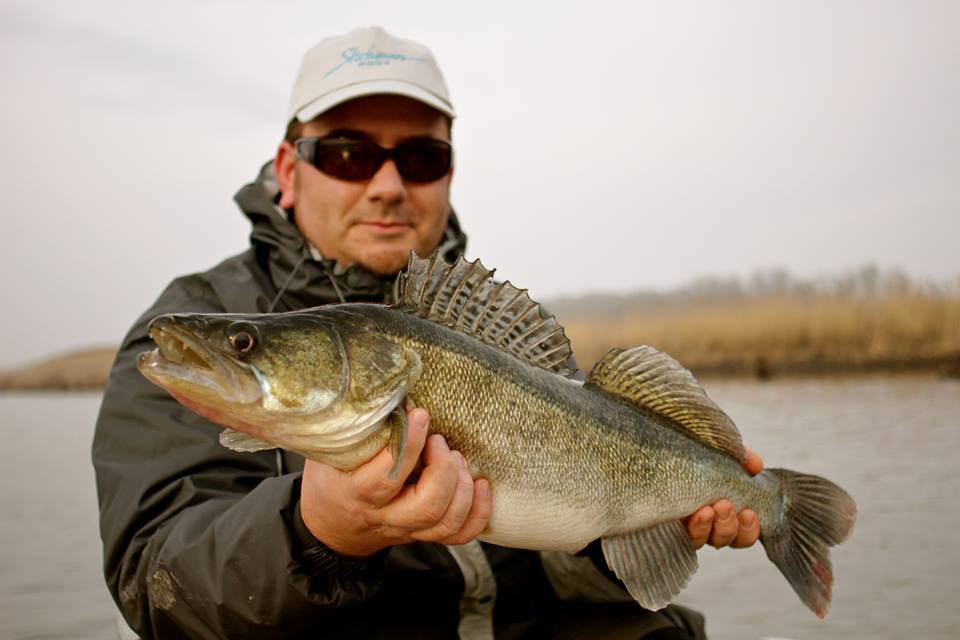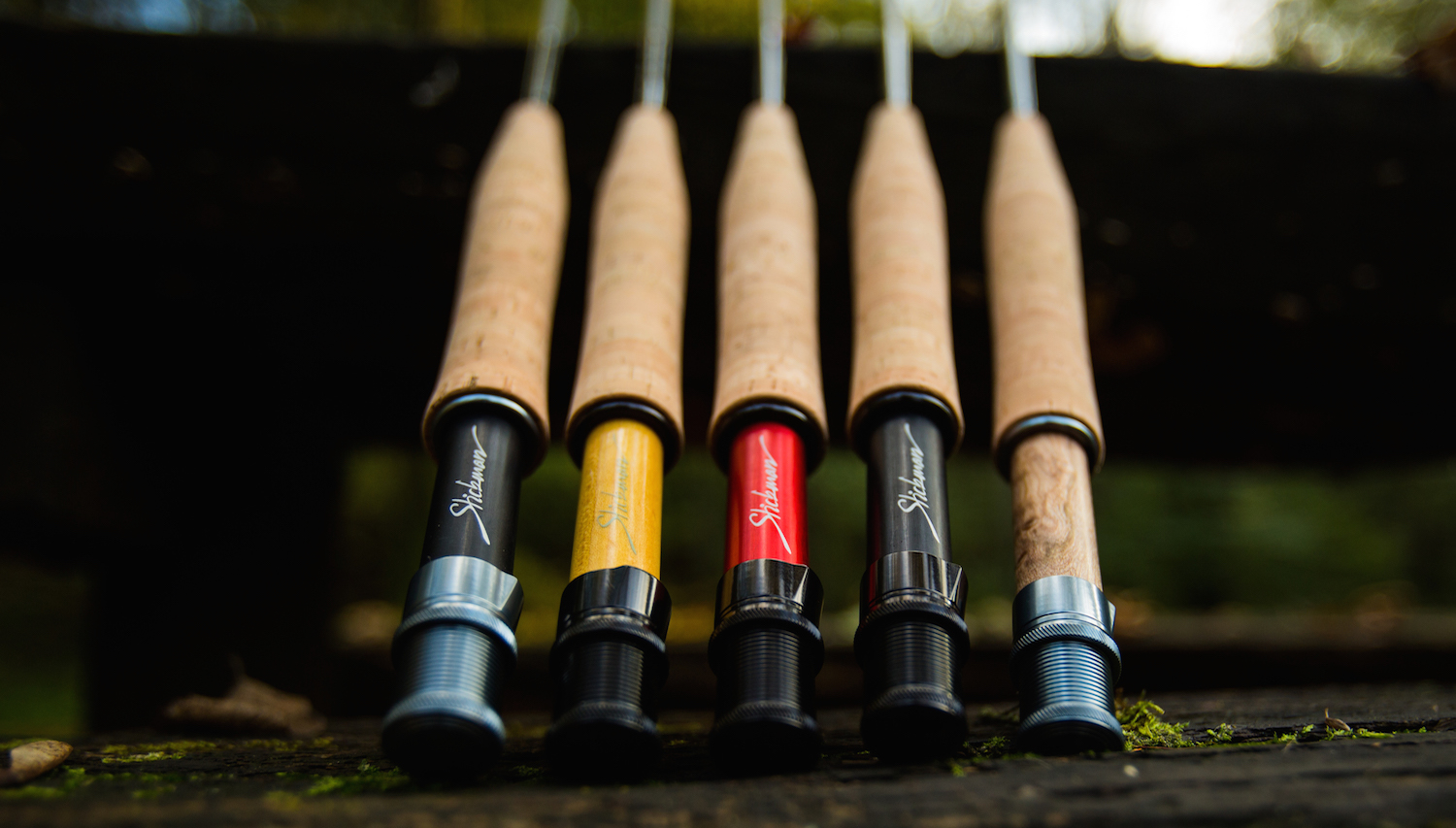Interview: Stickman Rods' Ákos Szmutni
2015.03.06 09:33

Published in the Hatch Magazine
In this interview published in the Hatch Magazine Ákos talks about rod design, rod building and the philosophy behind Stickman Rods as a company.
Interview: Stickman Rods' Ákos Szmutni
by Chad Shmukler on Mon, 02/23/2015 - 08:13
Last week, we reviewed the P5 fly rod from Stickman Rods, with much fanfare. While that may have been the first time you heard of Stickman Rods -- a relative newcomer out of Spain and Hungary -- but there's a good chance it won't be the last. A few weeks ago, we sat down with Ákos Szmutni for some insight into Stickman's design philosophy, manufacturing principles and some insight into Stickman's decision to enter the high-end rod market.

Hatch Magazine: The soul of a rod, and what makes it unique, seems to be in its blank. Are your blanks 100% custom?
Ákos Szmutni: Yes, they are made to our specifications and are not available anywhere else.
HM: Your promotional materials state that "we are able to do things with graphite that only a few others on the planet can". For most, this will sound like marketing mumbo-jumbo, even if it is not. Can you elaborate on this, being specific and/or technical?
AS: To design a great rod you need a great caster and fisherman. How could you design and build a top blank without being able to bring it to its limits? Alejandro Vinuales designs our blanks to my specifications. In casting instructor circles he is considered the be one of the best casters in the world. We are not talking just distance here, but all aspects of casting and most of all the mechanics of it. How could you know what you have to change to achieve your set goals without knowing what happens with the rod during the casting process? A lot of people think Alejandro is one of the top 3 rod designers in the world (and not necessarily ranked #3). We also consider ourselves good fisherman and we are gathering feedback from different sources regarding our rods. We don’t believe in magical materials. It is not an exaggeration to say that most (if not all) raw materials are available to all rod builders. The magic is all in the design.
HM: You don't build rod series that contain 10, 15 or even 4 different rods, and that attempt to preserve action and design characteristics across different weights. Why did you decide to confine your rod series to a single weight, and how does this approach differ from other manufacturers?
AS: We build each and every rod model with a combination of specific fishing situations in mind. We work a lot on each model to have something that we are satisfied with. Why would I need a 4wt rod with the same action as an 8wt designed to fish bonefish or pike? Every rod model is unique.
HM: What is your overall design philosophy? Are there specific trends in the fly rod industry today that you've tried to emulate? Avoid?
AS: We try to design rods with one thing in mind: performance. Our rod should cast and fish perfectly for the species and in the situation they were intended to do that. We don’t have any particular path we have chosen: if we develop a rod for small creeks to cast 20-30 feet of line it will bend deep and present a fly like it was painted on the surface. If I want something that casts 8 inch flies to 100 feet the rod will be fairly stiff. Generally I prefer rods with sensitive tips and more authoritative butt sections.
I am the worst kind of gear freak: I am unable to tolerate imperfections. If the gear I use has some flaw it annoys me and I am unable to enjoy fishing. I will modify it as long as it is not the way I want it to work. For example I make my own fly lines for pike fishing as none on the market suits my needs.
I was looking for the perfect 8wt rod for years. I think I have cast, fished or owned all the top of the line 8wt rods of the major brands at one point. I knew exactly what I want but it just did not exist. When I cast our 8wt prototype the first time, after a couple of casts I felt that this was the one I have been looking for so long. It is the same with all rods we sell: if I don’t find it perfect, we won’t sell it. Hopefully this means that our customers will have the same experience: just the pure joy of fishing and casting, no restrictions because of the tackle.
One funny trend we won’t follow is labeling our rod 1 or 2 class lower than they actually are. Now we are at the point in the industry where most rods are under labeled and to make them usable for the average caster even some trout lines are produced and marketed being one full line size heavier (not speciality lines, just ones for general use). I don’t really get this: here is a 5wt line that is 6wt? Our rods are true to the line class. They will perform best with the line size on the label. We test them with lines that are more or less AFTM conform. So if you fish heavily overweighted lines choose a size lighter. If you contact us we can give you line recommendations and even grain windows we find optimal for our rods.
The other thing we try to achieve is sell rods that are just as advertised. Our rods +/- 2% the stated weight. I had rods from high end manufacturers that were up to 14% heavier than the weight written on the label.

HM: What about beyond the blank? How do your components compare to other high-end rod manufacturers?
AS: We use the best available materials that aid the performance of the rod. The reel seats come from REC as the Recoil guides too. The stripping guides are Fuji Alconites. They are lightweight, durable and come in both black and silver color. There are some options out there regarding stripping guides that might seem to be more attractive but each of them have some serious flaw that prevents us from using them. These Fujis are not perfect either but we can’t find any better compromise right now.
I always have to laugh when someone says that excellent quality cork is hard to get nowadays. No, it is not. It is just expensive. Cork is still the best material for a handle, it is organic, sustainable and you can support the cork farmers in Portugal by using it. They have a hard time with the wine industry changing to artificial substitutes. We buy the best available cork. Yes, it costs as much as the wholesale price of some low end fly rods but that is the part of the rod that you have contact with. You can’t cut corners there.
We use pre shaped grips as that is the only way we can see how the finished grip will look like. Gluing cork rings to the blank and shape it afterwards looks like a more “artisan” kind of way of building a rod, but you will never know how many holes you will find in the grip after grinding it.
HM: Stickman rods are designed in Spain and built in Hungary. Can you tell us a little more about how the business is split between these two countries? What else is there to know about your rod building facility?
AS: Both Hungary and Spain are members of the European Union so we are technically one country (kind of). It is a bit like if a US manufacturer based in California would have their blanks produced in Texas. As far as I know Winston graphite blanks were produced by G-Loomis for a long time. This is a similar situation. The blanks are manufactured in Spain and built in Hungary, one at a time as you can see in our short film.
HM: Stickman rods aren't cheap. Anglers have shown they are willing to take the leap with a lesser-known company, but usually when it means saving money. Why should anglers feel comfortable spending money for a high-end rod from Stickman that they might otherwise spend with the likes of Sage, Orvis or R.L. Winston?
AS: They will possess a more capable tool. Consider these rods as a McLaren, a Pagani or a Koenigsegg. Something special and unique. We don’t want to compete with Sage or Orvis. We obviously don’t have the resources and the manufacturing capacity to do that. These rods should remain something special for the tackle-gourmet who wants to own something that not many have.
Just as these small companies building supercars we can go closer to the edge with our designs than the mainstream manufacturers. We create things that we enjoy to use the most instead of ones which sell best.
Your investment is safe though. Our warranty is similar to what other companies offer. I have a created a business model for this project that is very conservative and safe. You won’t see excessive advertising from us but we won’t disappear after a couple of years either. We are here to stay.
HM: How's business? How well have your rods been received by anglers? In Europe? In the U.S.?
AS: The feedback is excellent. I have the feeling most customers are surprised by the fishing and casting qualities of the rods, they are above their expectations. Our rods are fished in Australia, the USA, Norway, the Netherlands, UK, France, Germany, Austria and of course in Hungary. HM: What's next for Stickman Rods? AS: We plan to release a couple of new models. A 9’ #10 is in the making but needs further testing, just as an 8’ #4. Other than that we will just continue our work: build rods, being active in the social media, answer questions regarding the rods (never hesitate to write us a mail!) and fish a lot.